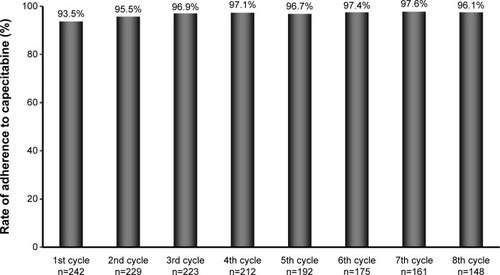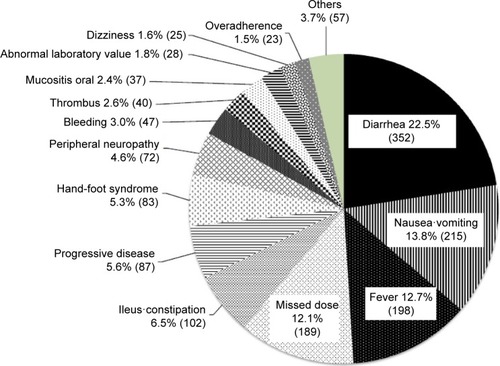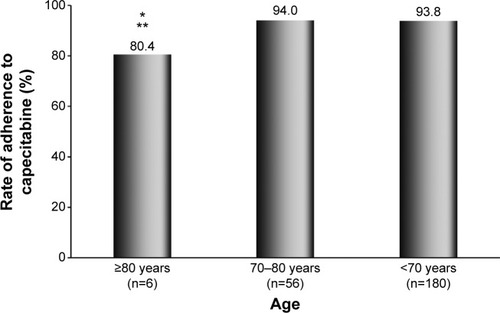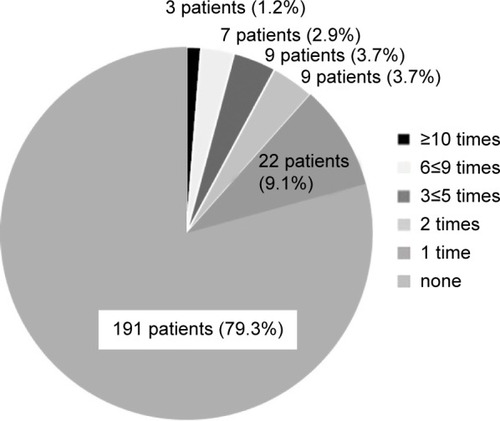Figures & data
Table 1 Baseline patient characteristics
Figure 1 Capecitabine adherence rate on XELOX treatment.
Abbreviation: XELOX, capecitabine plus oxaliplatin.

Figure 2 Factors reducing adherence to capecitabine on XELOX treatment (n=1,561).
Abbreviation: XELOX, capecitabine plus oxaliplatin.

Figure 4 Effect of age on adherence to capecitabine.


